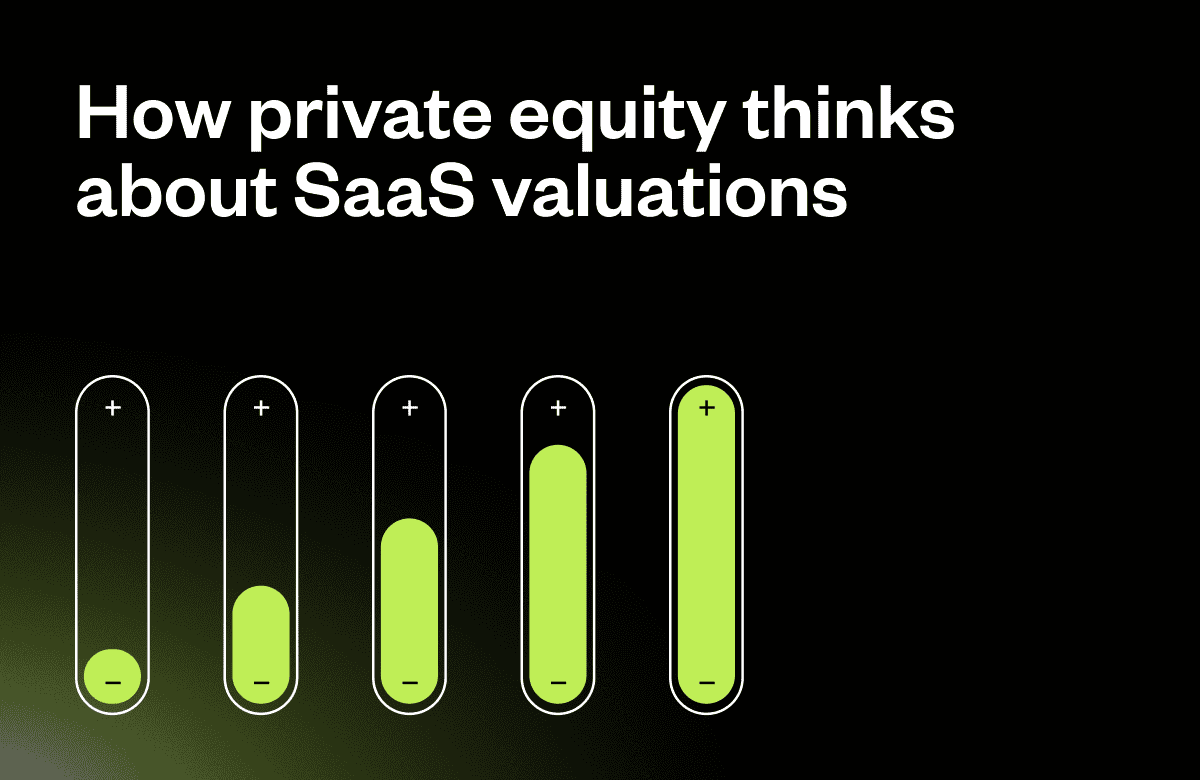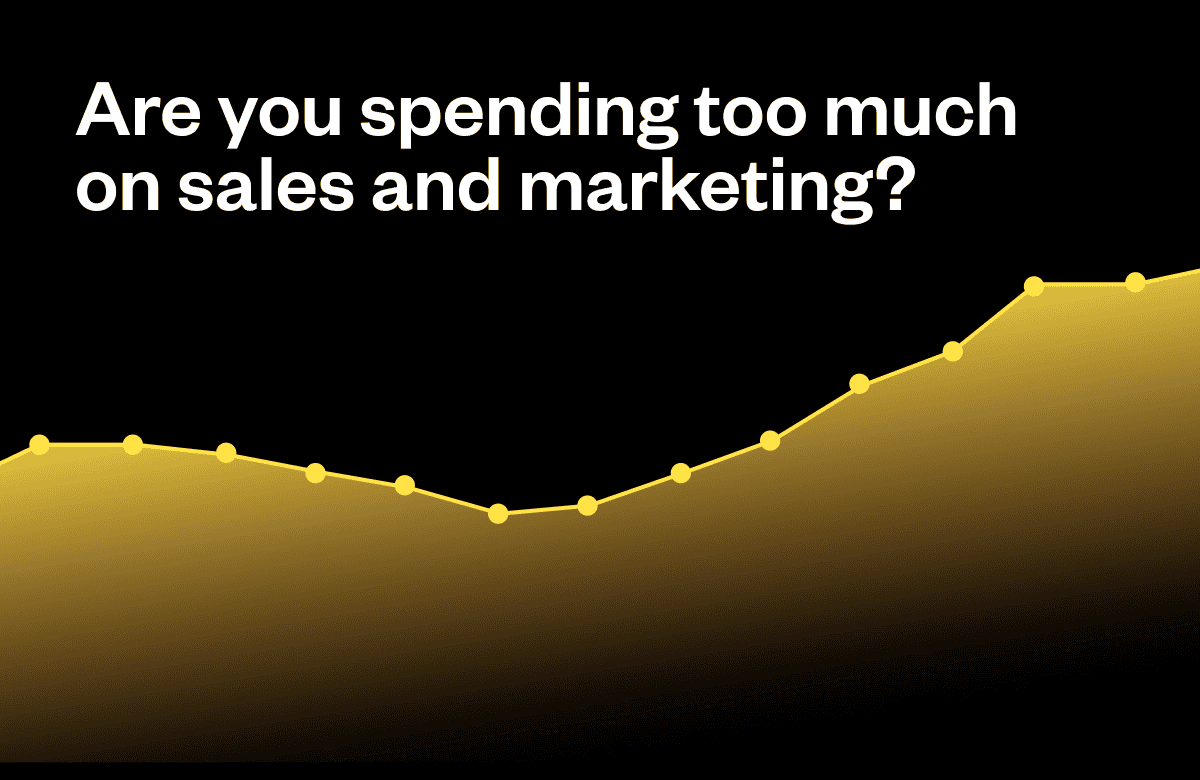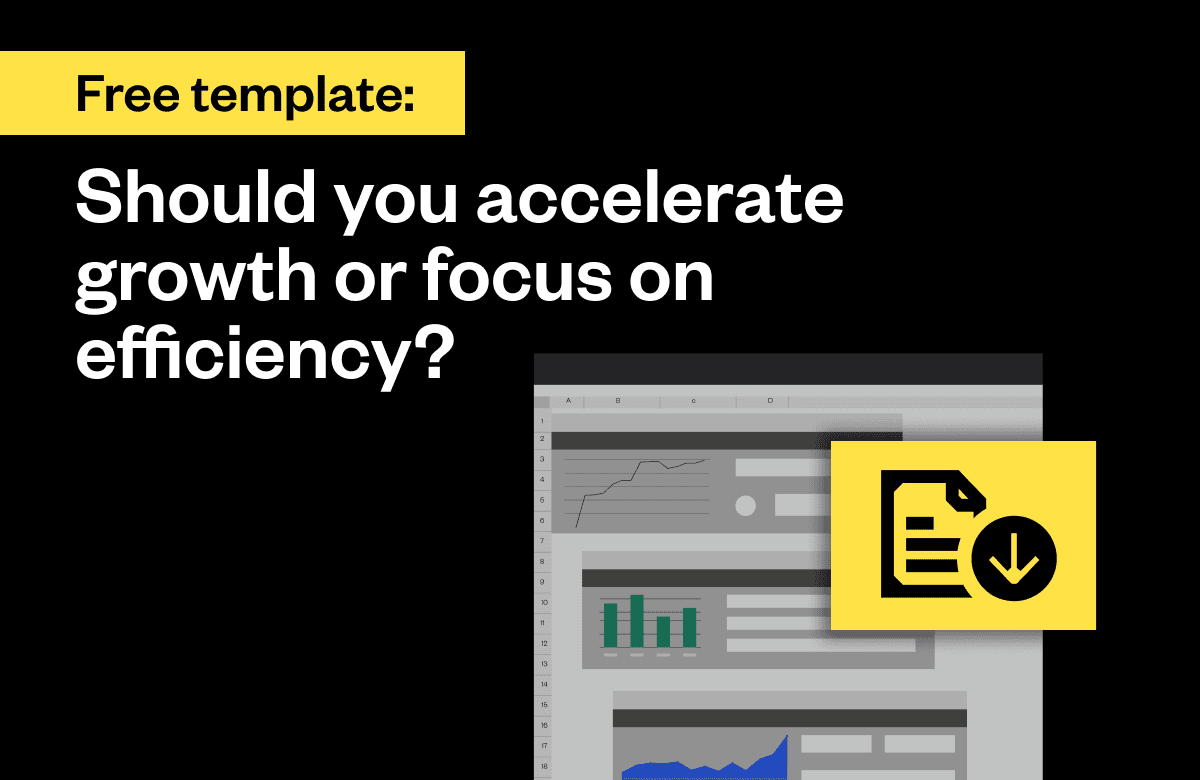When I started fundraising for SaaS Capital in 2006, PE firms were dismissive of SaaS.
They thought the model only worked for companies serving the SMB market and that SaaS was generally an unprofitable approach. All that changed around 2010, and now, PE firms dominate the SaaS landscape. If you are looking to sell your SaaS business, it’s highly likely a PE firm or a PE-backed firm will be the buyer.
PE thinking shifted again in 2020 to what we see today. They are still active in SaaS but have shifted from valuing businesses based on revenue to valuing them based on future cash flow. I have recently chatted with dozens of PE firms, and while not monolithic, the following statement holds for all of them.
Future EBITDA is the basis of PE SaaS valuations.
Because PE firms think this way, VCs have to follow suit. If you buy into a business on a revenue multiple and then sell on a cash flow multiple, you will (generally) lose your shirt. So, the shift in PE thinking has directly impacted how VCs evaluate and price SaaS transactions. It’s also fair to argue that the PE firms are downstream from the public markets, and the public market shift started this whole process.
For many folks in the investment community, the shift to EBITDA valuations is long overdue. Revenue was never a particularly good input for valuation. Some revenue is very profitable; some is not; some is sticky, and some is less so. However, in the early days of SaaS, revenue was the only input that worked.
Given the shift to EBITDA, what are the implications for SaaS business in fundraising or sale mode? It depends on your stage and what you are trying to accomplish.
Early-Stage — Minority Fundraise:
Early-stage companies are defined as those with less than $3 to $5 million of ARR. If you are raising an earlier-stage round, you need to demonstrate the building blocks of future cash flows rather than actual profits. Battery Ventures described the most straightforward way to do this, which divides your business into two parts: a cash engine and a growth engine.
The cash engine is your capacity to generate cash from acquired revenue over time. Its key levers are gross margin and net retention. Battery focuses on recurring revenue, COGS, R&D, and G&A. Basically, how much do you make on an existing customer on a fully loaded basis? A good benchmark here is 35%, and 50% is best in class. You then determine what to do with this cash, which leads to the growth engine.
The growth engine measures your capacity to turn sales and marketing dollars into new revenue. Its metrics are the CAC Ratio and Burn Ratio. The more efficiently your business can capture new revenue, the better. The CAC Ratio is the simplest of the CAC metrics and measures how many dollars of sales and marketing expenditures it takes to get one incremental dollar of ARR. If you can spend one dollar on sales and marketing to get one incremental dollar of ARR, you will be in the top quartile.
It’s acceptable for an early-stage business to lose money as long as it efficiently converts losses into new revenue and the revenue is sticky and profitable.
That said, even with excellent unit economics, as described above, VCs will also want their capital to drive the business to a point where meaningful profits are on the horizon because that is how the next round will be valued. So, an early-stage raise needs to move the business to where it’s on the cusp of generating profits. Model your forecasts and investments accordingly.
What are current early-stage valuations?
This is not an answerable question in a way that is helpful for companies raising money. The mathematical answer from Carta is the median pre-money valuation for a series A was $48 million in Q4 2023. However, no one reports the multiple of ARR, and they certainly don’t report growth rates. It’s also important to understand that priced series A rounds occur later in a company’s life than a few years ago. Often, several SAFE rounds have been raised before the series A.
Early-Stage — Company Sale:
SaaS companies with less than $3 million in ARR don’t generally have enough scale to meaningfully impact the buyer’s future EBITDA and are typically positioned as a “Capability Add-on.”
In these cases, the product itself becomes very important. Can it be easily added to a buyer’s product portfolio and cross-sold? This is harder than it looks. Buyers are skeptical. A buyer CEO recently said, “I have heard about cross-selling, just never seen it.” Your product must be highly complementary to the buyer’s products, and your ideal customer needs to be very similar.
At the very early stage, buyers will weigh buying your company versus building a similar product themselves. This is not a particularly strong position for the seller, given that acquired products still need integration and may not fit the current tech stack of the buyer.
That said, buyers will pay higher multiples in this area if you find the right fit because the total dollars are less.
Later-Stage — Minority Fundraise:
If you are raising a later-stage round (defined here as ARR above $5 million), positive cash flow should be clearly within reach based on the current capital raise and without relying upon hockey stick assumptions, cost cutting, or significant margin changes. Being capital-efficient is not enough.
In this environment, the Rule of 40 is instructive. The Rule of 40 is the company’s annualized growth rate plus its operating margin. If raising later-stage capital, your projections should show significant growth and at least some profit. Remember that the focus is on future profits, not current ones. Current profits show how the business makes money, and growth indicates how big the profits can be in the future. Both are required, but growth is valued more highly.
Later-Stage – Company Sale:
Larger SaaS companies will be valued based on their capacity to generate cash and will generally be categorized as platform or tuck-in companies. Platforms are businesses the PE firm will support with future capital and resources to grow and make future acquisitions, and tuck-ins are companies that will be merged into a platform.
Companies seen as platforms by PE firms are valued like a later-stage minority round described above. To become a platform company, you need to have solid growth and profitability, operate in a sector the PE firm thinks is ripe for consolidation, and have an experienced team capable of absorbing acquisitions.
If your SaaS company is more likely a tuck-in, PEs will model the combined entity’s cash flow potential. They will look closely at retention and headcount. If the business retains revenue and reduces costs, it can substantially increase cash flow. Be prepared with detailed revenue by customer-by-month schedules, contracts, and employee census data. Also, buyers will look closely and critically at cross-selling opportunities as described above.
Creating a Competitive Process:
VC and PE firms will try to pay as little as possible, regardless of how they model their valuations. The modeling described above establishes the top of their valuation range, not the bottom.
Creating leverage is the only way to achieve maximum value for your business. You can do little to improve the terms if you have one offer and need to sell or raise capital.
Having negotiated hundreds of debt and equity deals primarily as an investor but also as an intermediary, I estimate that valuations are 20% to 30% higher for a company in a competitive process vs. a stand-alone transaction. This valuation benefit of competition should be intuitive in our daily lives, such as when selling a house. Still, I’m always surprised how many founders and executives don’t work hard to create a competitive environment.
The 20% to 30% competitive valuation premium translates into millions or hundreds of millions of dollars.
You don’t necessarily need to hire an advisor to create a competitive process if you have the skills and resources internally. Still, you do need to be intentional about running a process.
Takeaways:
Except for seed deals, valuation methodologies have shifted from revenue multiples to cash flow at every stage of the SaaS market. You may not have noticed the shift because you can always take a company’s valuation, divide it by ARR, and get a valuation multiple, but that’s not how investors are doing their math these days.
The mindset is forward-looking cash flow.
Understanding the PE mindset before engaging with them or VCs will help you best position your company to maximize value.



